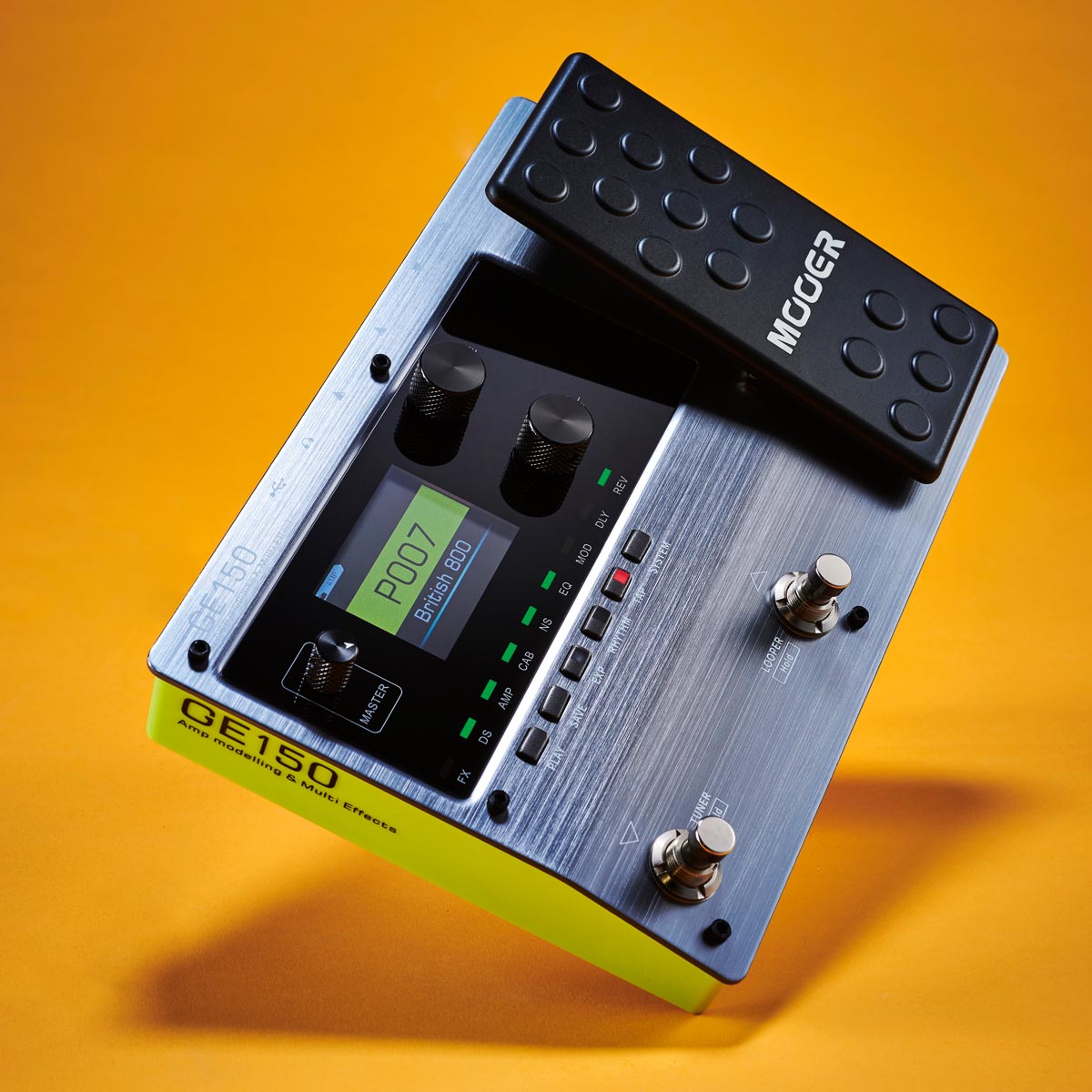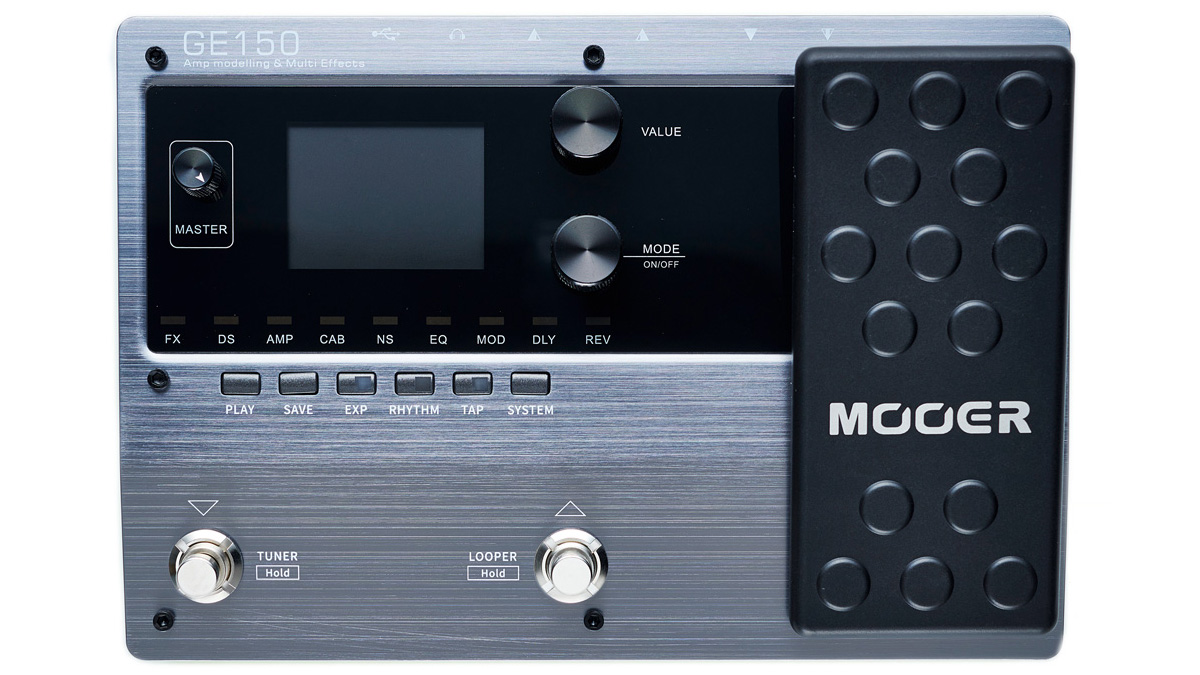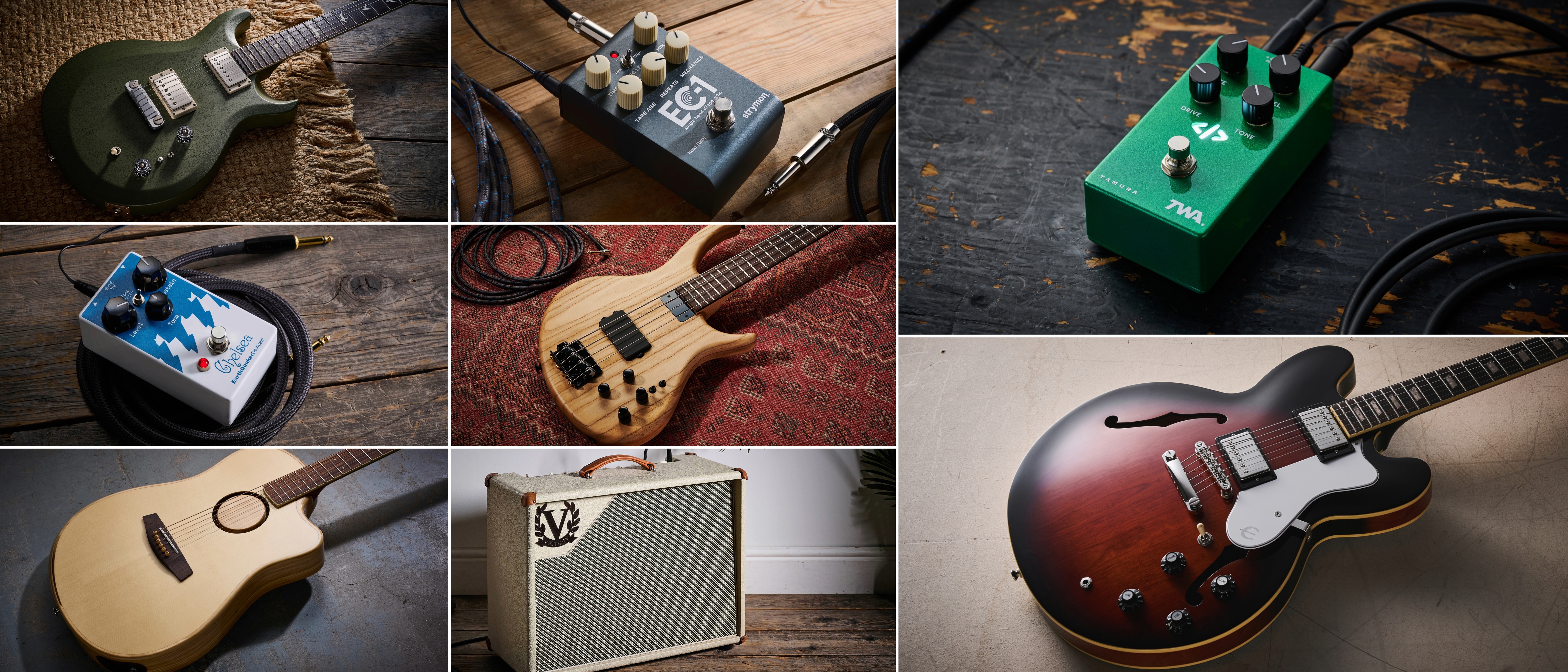Guitar World Verdict
With a whopping 55 amp models and 151 effects in a compact, intuitive format, the GE150 is a feature-laden unit that belies its modest price tag.
Pros
- +
Best amp modeling in its price class.
- +
Add your own IRs.
- +
Drum rhythms and metronome makes for a great practice tool.
- +
Excellent value.
Cons
- -
Effects could be more tweakable.
- -
Shonky pitch-shifter.
You can trust Guitar World
The past two years have seen a radical shift from Mooer. It has gone from the original purveyor of pocket money-friendly micro pedals with, ahem, familiar origins to an effects powerhouse in its own right, producing some astounding flagship devices, including the GE300 amp modeller/multi-effects.
The GE150 combines the company’s reputation for value for money with its more recent innovative streak to produce a feature-packed multi-effects comfortably below the $200 mark.
For the modest outlay, you’re getting 55 amp models – derived from Mooer’s best-selling Micro Preamp series, no less – as well as a whopping 151 effects. While the unit packs its own array of Impulse Responses, what takes this above and beyond a typical multi-effects is the ability to add in your own.
It’s a handy practice tool too, with drum rhythms and metronome settings, an aux in jack, and a micro-USB, which even allows you to record direct via your phone.
All it takes is a quick peruse of the 200 onboard presets to confirm that this multi-effects is punching way above its price tag. While there are half as many models as on the GE300, there will be more than enough for most players.
The clean models – particularly the Mesa Mk3 effort – compress beautifully, while the Jazz 120 model is as pristine as any recorded tones from the solid-state classic.
The models that stand out correspond with our faves from the Micro Preamp range, so we quickly found our chug saviours in the 5150 and Engl Powerball sounds, which deliver all the aggression and saturation your heart could desire, minus the fizz.
All the latest guitar news, interviews, lessons, reviews, deals and more, direct to your inbox!
Any sounds that have a little too much top-end can be tamed via the handy onboard EQ, which is accessible on each patch.
This is no downsized GE300, however, and that becomes apparent while delving into the effects selection. There’s a reasonable selection, but you’re limited in terms of tweaking: each effect offers only three or four parameters, which limits your choice when it comes to modulations. We’d recommend avoiding the shonky pitch shifter, but the delays and reverbs are stellar, if a bit vanilla.
There are two footswitches for cycling through presets, but holding the left activates a built-in tuner, while keeping your foot on the right activates the 80-second looper.
If you’re shopping for a new multi-effects, the GE150 is a sound choice, particularly if realistic tones and a robust feature set are more important to you than soundscaping. Kudos to Mooer, despite its light weight, the whole package looks sleek and feels rock-solid, particularly the smooth-operating expression pedal.
You won’t find better amp-modelled sounds from any other multi-effects in this price range, and that alone makes this diminutive unit worthy of your rig.

Specs
- TYPE Multi-effects/amp modeller pedal
- CONTROLS Master, value, mode; play, save, exp, rhythm, tap and system buttons, 2x footswitches, expression pedal
- SOCKETS Input, 2x output, USB, headphones, micro-USB, aux in, power
- BYPASS Buffered
- POWER 9V power supply (included)
- PRICE $200/£189
- See Mooer Audio for more details

Mike has been Editor-in-Chief of GuitarWorld.com since 2019, and an offset fiend and recovering pedal addict for far longer. He has a master's degree in journalism from Cardiff University, and 15 years' experience writing and editing for guitar publications including MusicRadar, Total Guitar and Guitarist, as well as 20 years of recording and live experience in original and function bands. During his career, he has interviewed the likes of John Frusciante, Chris Cornell, Tom Morello, Matt Bellamy, Kirk Hammett, Jerry Cantrell, Joe Satriani, Tom DeLonge, Radiohead's Ed O'Brien, Polyphia, Tosin Abasi, Yvette Young and many more. His writing also appears in the The Cambridge Companion to the Electric Guitar. In his free time, you'll find him making progressive instrumental rock as Maebe.

